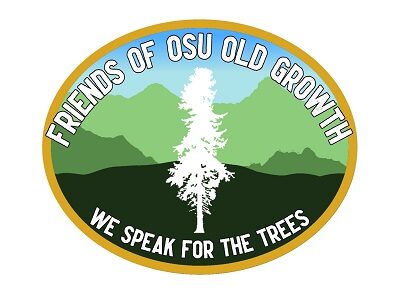A few years back, I learned of secret negotiations involving the possible donation of a large tract of private forest land to OSU’s College of Forestry. The land in question (owned by Starker Forests, Inc. until recently) is a ~277-acre parcel surrounded by OSU’s McDonald Research Forest. The Starker inholding is located only about a half mile from OSU’s Sulphur Springs Trailhead and is shown in dark yellow in the map below.
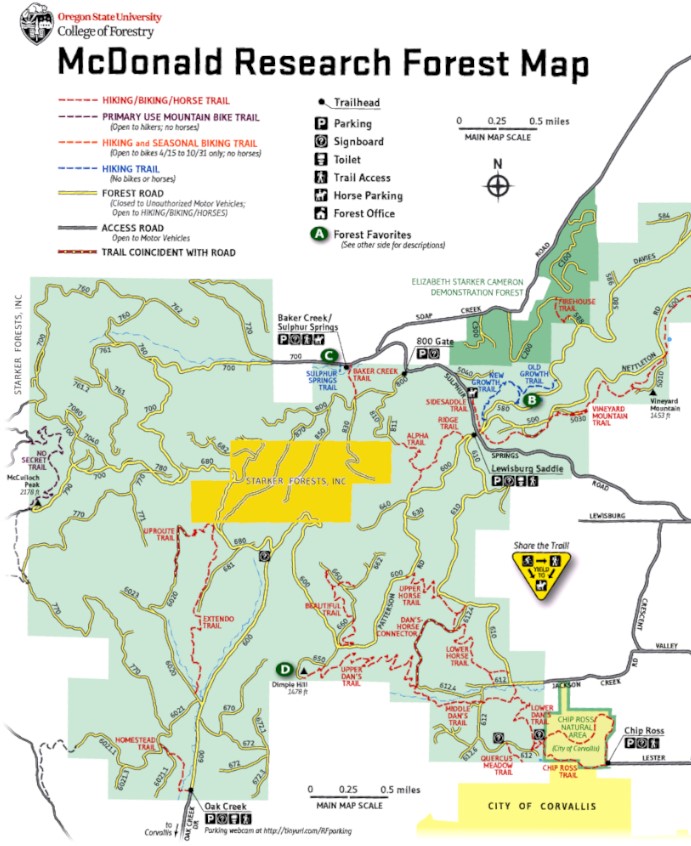
Overview map of OSU’s McDonald Forest with Starker Forests parcel shown in dark yellow (and City of Corvallis land in light yellow). (base map courtesy of OSU)
As the maps below show, this parcel of forest land comprises much of the Baker Creek drainage (a primary tributary of Soap Creek). It is directly adjacent to two amazing stands of old-growth forest, and close to three others (including the 36-acre Sulphur Springs stand, protected through our advocacy efforts, after OSU cut 16 acres of ancient forest in 2019).
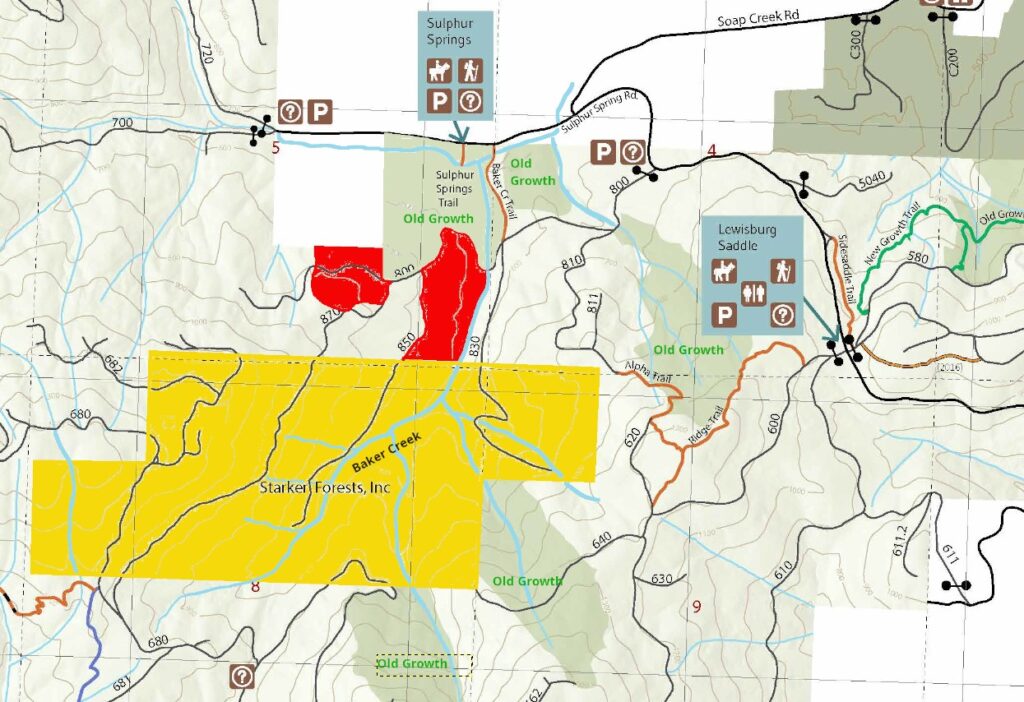
Map showing the Starker Forest parcel (in yellow), surrounded by OSU’s McDonald Forest. The five areas shaded green are old growth forest, currently protected under OSU’s 2005 Forest Plan. Areas of old growth previously cut by OSU are shaded red. (base map courtesy of OSU)
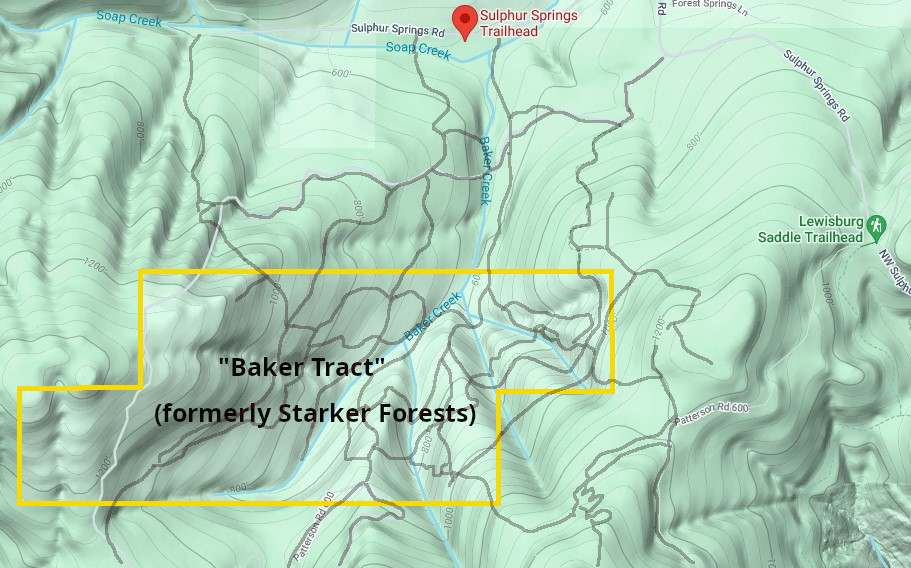
Topographical map showing the maze of trails in the Baker Creek drainage (base map courtesy Google and Plotaroute.com)
The connections between OSU and the Starker family date back to the early days of the forestry program at Oregon Agricultural College (OAC, now OSU). The family’s patriarch, T.J., was a student in the first graduating class and later taught as a professor at OAC for two decades. Three generations of connections between the Starker family and OSU have formed something akin to a familial relationship.
The Starker Family has historically been one of the College’s largest benefactors. The donation of a 260-acre parcel of forest land in the Soap Creek Valley in 1995 helped fund the construction of OSU’s library and established an endowed chair in the College of Forestry. More recently, Starker Forests helped fund OSU’s newest forestry buildings (the Oregon Forest Science Complex), with a gift of at least $5M.
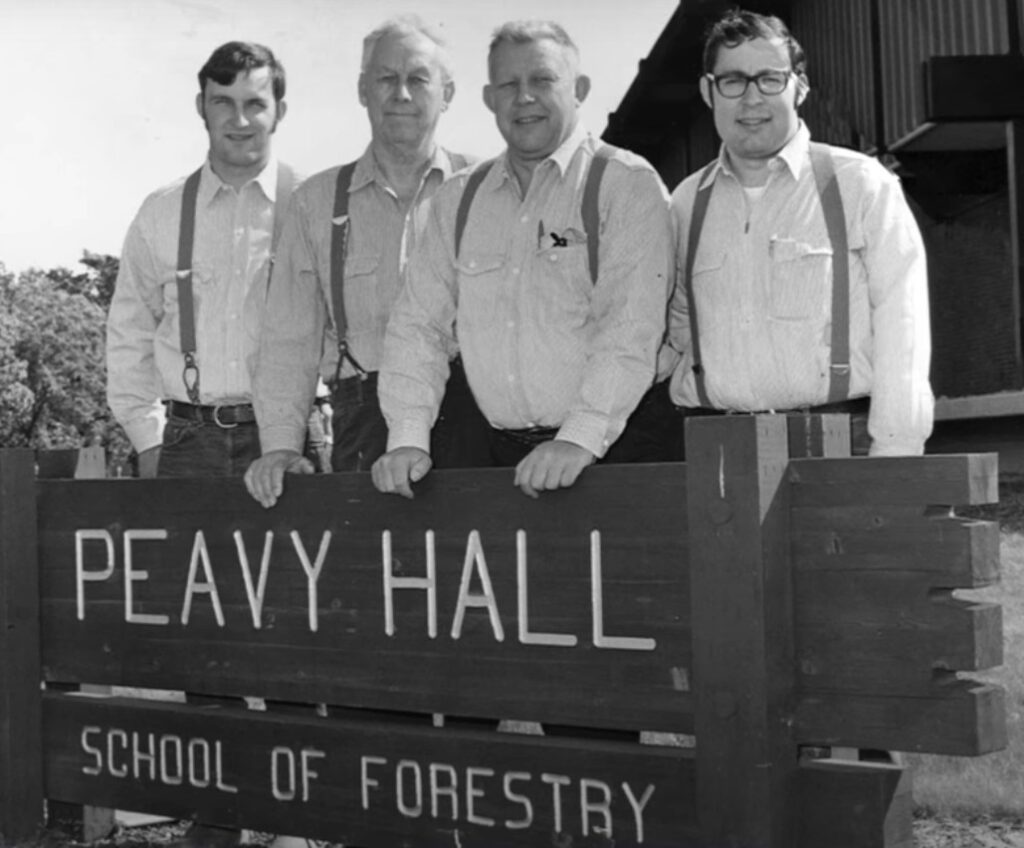
Three generations of Starkers have been associated with the College of Forestry in one way or another (as students, a professor, benefactors, and serving on forest planning committees). The company boasts that all of its employees are graduates of the College of Forestry. (Photo from Starker Forests YouTube video)
As someone who has explored the largely overlooked Baker Creek area for several decades, I was intrigued and excited by the prospect of seeing it donated to OSU. I first biked through this section of forest during one of OSU’s early Mudslinger mountain bike races in the late 80’s. Local trail runners are familiar with the twisted network of unofficial trails (aptly named, “The Maze”) which is a particularly difficult section of the McDonald Forest 50km race course.
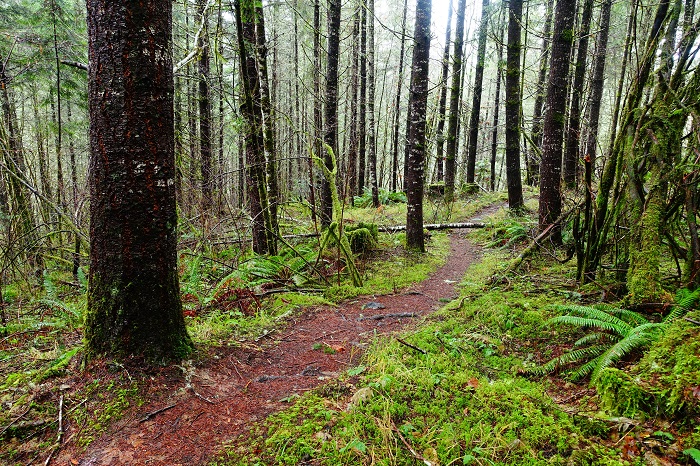
One of roughly a dozen unauthorized trails in “The Maze”, formerly owned by Starker Forests, but now officially part of OSU’s McDonald Forest.
With their history of philanthropy and OSU connections, I expected the Starker family would be wooed by College leaders and eventually announce the donation of this land to OSU. As the years went by with no news, I wondered what the hold-up could be. Maybe Starker was placing conditions on the donation, like having a portion logged to support another endowed chair in the College of Forestry. Or, maybe a younger, enlightened generation of leaders was figuring out how to ensure this forest would be protected as a buffer for the adjacent old-growth ecosystems (wishful thinking, I know). With five significant old-growth reserves (and two recent, old-growth clearcuts) close by, protecting the entire Baker Creek drainage would send a powerful message of hope and healing to the community.
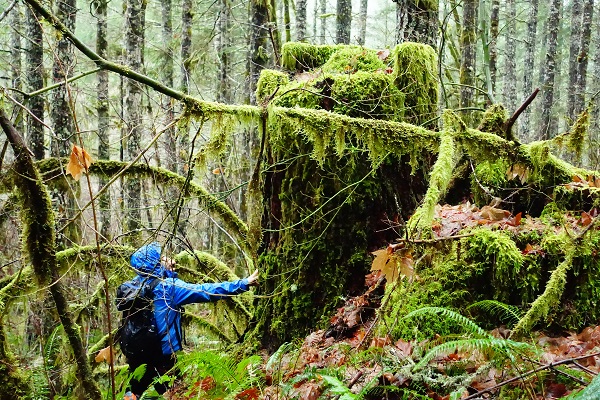
The splendor of giants that once filled this forest can be imagined from the large, decaying stumps. OSU has already planned to log a portion of this recovering forest (despite having owned it for only a few months).
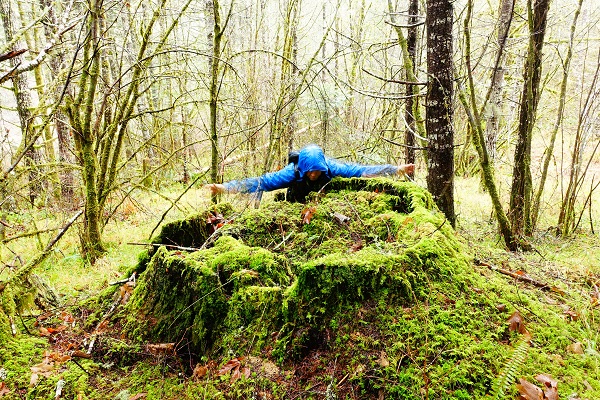
Unfortunately, College leaders had a much more involved and devious plan. A few months ago, word finally leaked out that they had negotiated a complicated, three-way transaction consisting of the following:
- Starker Forests donating to OSU the (~277-acre) McDonald Forest parcel (now called, “The Baker Tract”)
- OSU giving Starker Forests the (160-acre) Spaulding Research Forest located in the Corvallis Watershed near Marys Peak (liquidating this public forest dating back over 100 years).
- OSU selling Starker Forests ~176 acres of older forest in the Dunn Research Forest for a relative pittance (a small fraction of the value of the standing timber that Starker will undoubtedly cut in the coming years).
For more details about the 2nd and 3rd land transactions listed above (including why they are so appalling, how they violate the by-laws of the OSU Trustees and state law, and how they demonstrate a glaring lack of oversight by OSU leaders), read my next two blog pieces:
The College’s Secret Land Deal: Part 2 – Lost Opportunities in the Spaulding Research Forest
The College’s Secret Land Deal: Part 3 – Dunn Forest Deal Benefits Timber Industry Donor
In the meantime, get out and explore the hidden treasures of the Baker Creek area (which can be accessed from the Sulphur Springs Trailhead). Also, please contact the president and trustees to ask that they demonstrate their stewardship of these public forests by establishing a large, protected, old-growth buffer in the Sulphur Springs – Baker Creek area. These forests are worth far more standing!
Note: Neither the associate dean of the College of Forestry (Holly Ober), the OSU President (Jayathi Murthy), nor the OSU Trustees have been willing to answer basic questions about these land transactions which I emailed to them. The associate dean wouldn’t even identify the Dunn Forest parcel (though she has made the outrageous claim that the trustees did not consider these transactions and were not required to do so – more on this in parts 2 and 3).
The only official mention of these transactions I’ve been able to find is this note on the College of Forestry’s webpage:
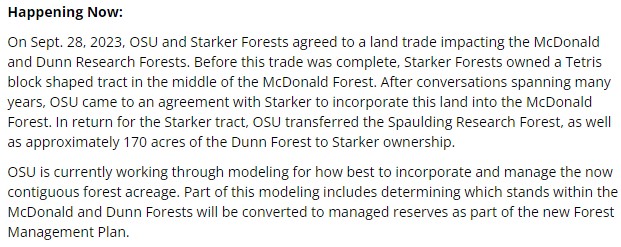
This message on the College of Forestry’s webpage is the only official information describing the recent land deal. It is telling that OSU’s focus is how to “incorporate and manage the…forest acreage“, and “determining which stands…will be converted to managed reserves [logged]“. They make no mention of conserving, restoring, or protecting these public lands.
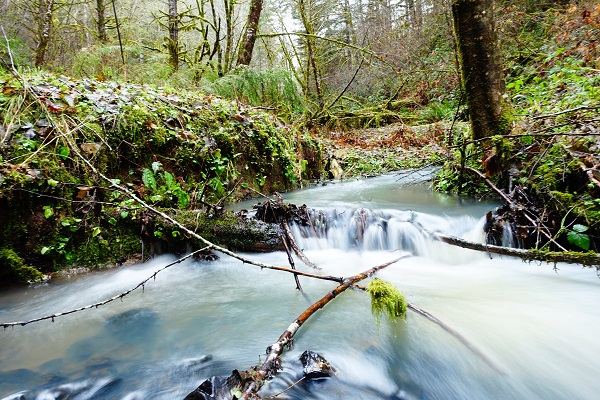
The meandering Baker Creek, in the heart of “The Maze” (in the parcel that Starker swapped with OSU).
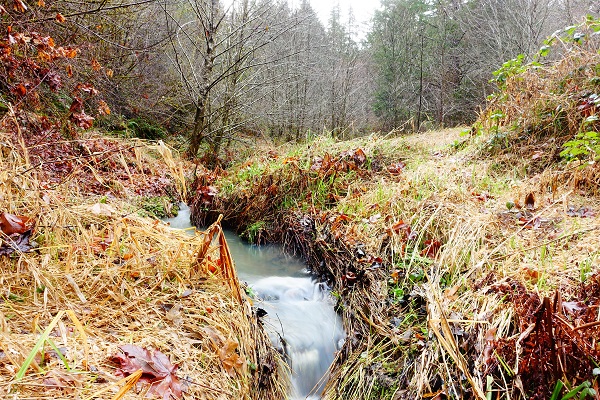
Remnants of an old beaver dam reveal what formed this creekside meadow. An intact beaver dam is located about 1/4 mile downstream.
